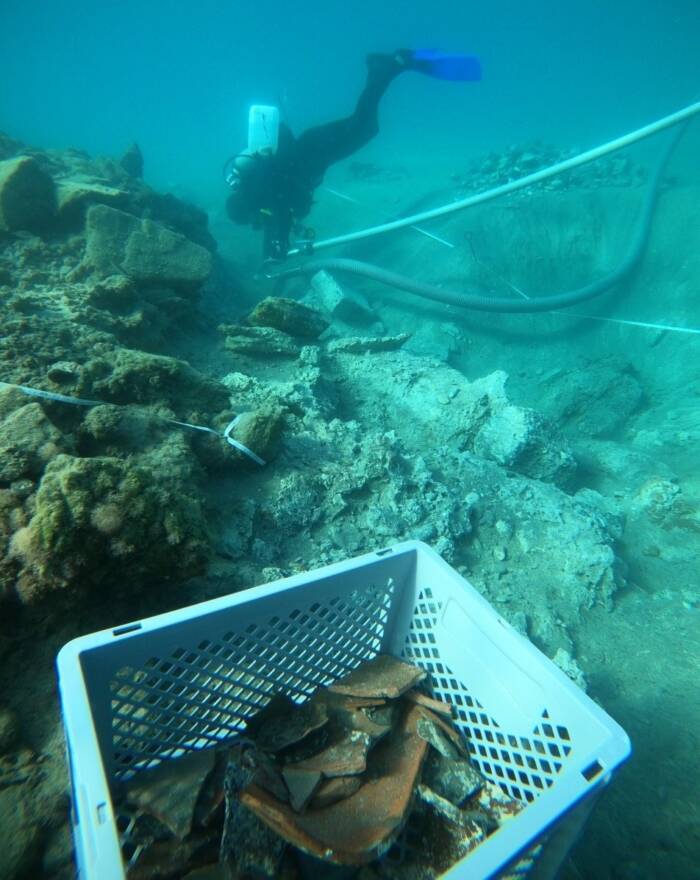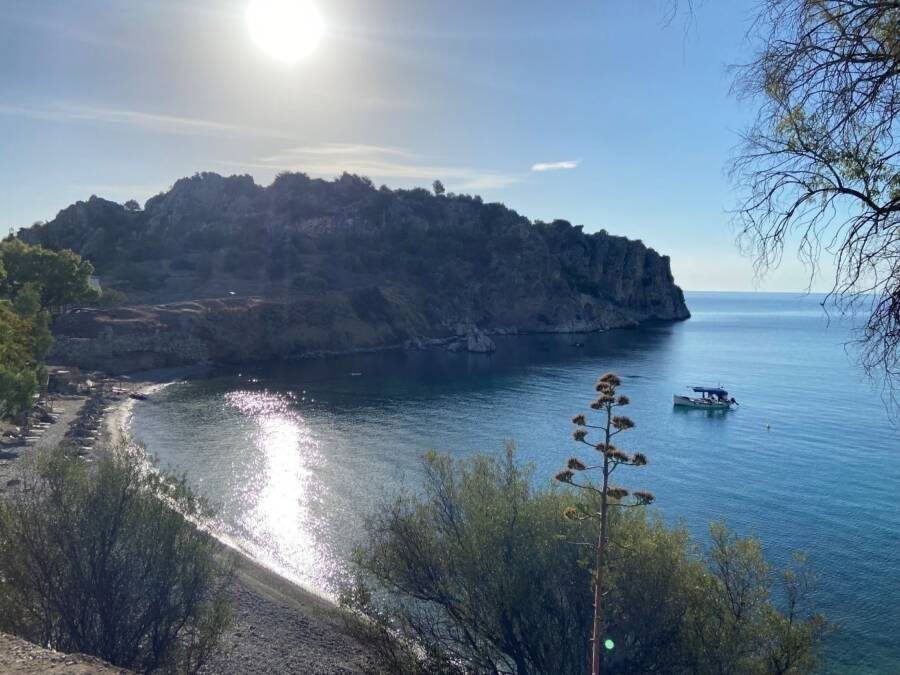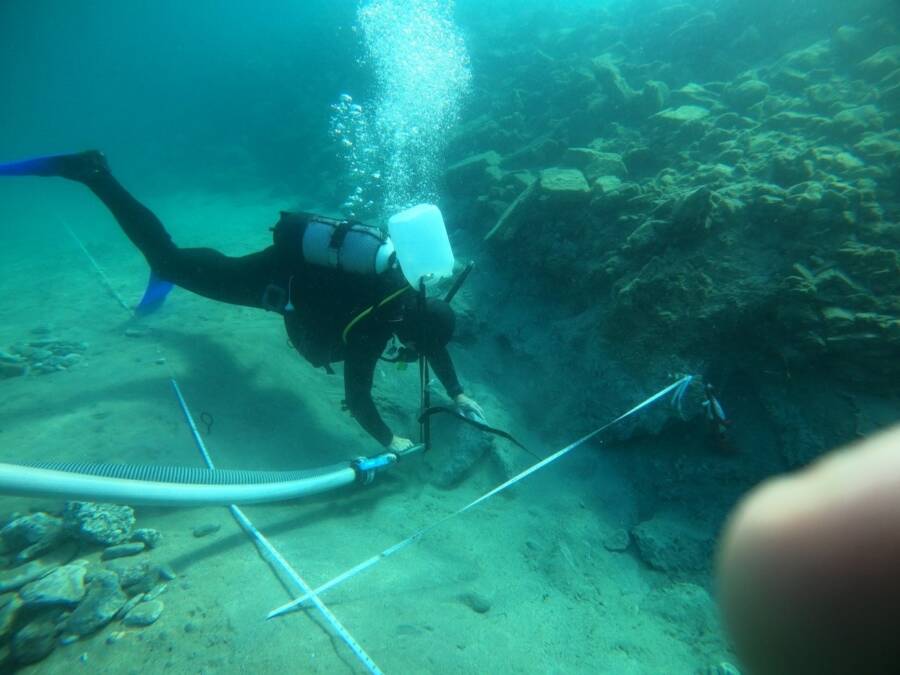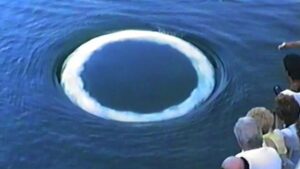“Secrets of the Deep: Divers Discover Lost Structures from the Mystical Ancient City of Asini Beneath the Waves of Southern Greece!”
In the end, they were able to locate “significant remains” of this stone-built port facility. Archaeologists also located a number of amphorae fragments (amphorae were storage jars popular in ancient Greece and ancient Rome) along with this submerged structure.

Niklas ErikssonThe amphorae fragments, seen here collected in a crate, may offer valuable clues about when the port was used and possibly even when it was abandoned.
This represents an especially exciting find because the amphorae fragments were likely left there while the port was still in use, or at the time that it was abandoned. Archaeologists are therefore hopeful that these ancient fragments can help determine the age of the port.
Still, many questions remain about the port as well as the larger ancient city of Asini.
The Murky History Behind The Lost City Of Asini

Niklas ErikssonIn this photo of the Greek coast, the archaeologists’ diving point is marked by the boat seen on the right side of the frame.
Greek myth states that the region near Asini was first populated by the Dryopes, an ancient tribe that lived on Mount Parnassus until they were driven out by Hercules. Whether or not this myth has any grain of truth, archaeologists believe that humans first settled in the area around the sixth millennium B.C.E.
Asini was an important city during the Mycenaean era (1750-1050 B.C.E.), and continued to flourish even as other Bronze Age settlements collapsed. Though the city was destroyed by the invading Argives during a war with Sparta in the eighth century B.C.E, it eventually recovered and was occupied during the Roman and Byzantine periods. Sadly, however, many of the ancient ruins at the site were destroyed by Italian forces during World War II.












